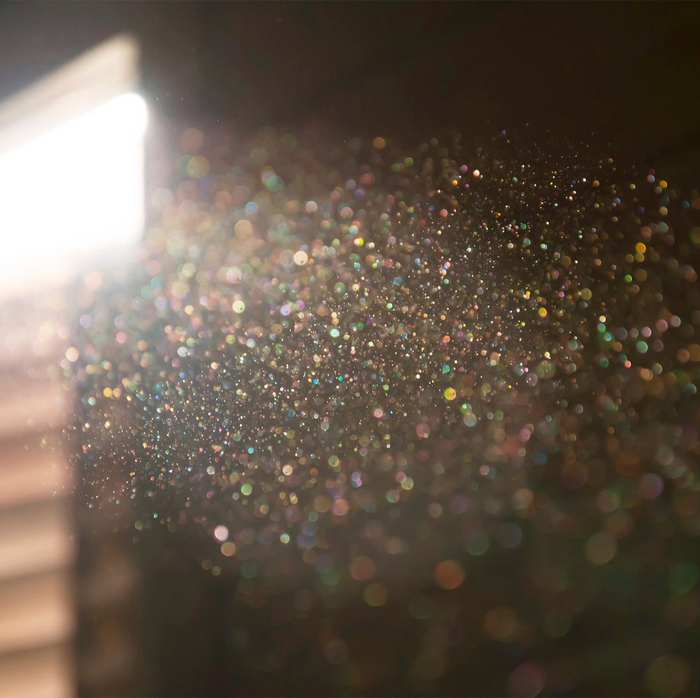What comes to mind when you think of the word plastic? Over the past few decades, the word plastic has infiltrated our environment with connotations of “synthetic”, “fake”, and “cheap” – the antithesis of “natural”, “real” and “authentic”. In its physical form, we see plastic in common items such as grocery bags, plastic bottles, Saran wrap, glitter, laptops, and cellphones. We come into contact with plastic on a daily basis, and due to the versatility and longevity of plastic, can expect to continue being exposed to it for many years to come.
A short history of plastic
The word plastic didn’t always have these negative connotations. Originally meaning “pliable and easily shaped”, plastic in the past hundred years became the name for a category of materials called polymers. Polymers are defined as “of many parts” because they are made of long chains of molecules which are found in nature; every living organism contains them.
Ironically, the first plastic developed by John Wesley Hyatt in 1869 was for an environmental cause: to prevent elephants from becoming extinct from over-hunting for the ivory in their tusks. Neither was this first plastic synthetic; instead, it was from the raw material called cellulose, naturally derived from the cell walls of plants. Hyatt treated the cellulose with camphor to create the forerunner to the synthetic plastics we know today, called celluloid. Celluloid could be molded into various shapes and made to imitate various substances such as ivory.
In 1907, the first fully synthetic plastic was invented; it contained no molecules which could be found in nature. Called Bakelite, it was created by combining formaldehyde with phenol – two substances which we know today as being highly toxic. The development of Bakelite caused an explosion in the industry. Quickly, new plastics were developed: cellulose acetate, Styrofoam, polystyrene, nylon, polyethylene. Scientists thought they had stumbled upon a “material utopia”, and plastic production peaked during WWII.
After WWII, the unblemished enthusiasm for plastics began to fade as environmental and health concerns began to appear. In the 1960s, plastic debris were found littering the ocean, and concerns about pollution were raised after a major oil spill caused the polluted Cuyahoga River in Ohio to catch fire. In the 1970s and 1980s a growing concern began to arise around waste; many plastics were single-use, but stayed in the environment for good. As public opinion changed, the word plastic gained a new meaning of “cheap, flimsy, fake”. More recently, the potential threat of plastics, particularly about additives such as BPA, and a class of chemicals called phthalates also has caused further concern about how plastics will affect the health of future generations.
In addition to health and environmental concerns of plastic, a new area of concern has grown around a form of pollution called microplastics.
What are microplastics?
Microplastics are fragments of plastic that have degraded into particles under 5 mm in length; that is, about the size of a sesame seed. Fragments of plastic with a diameter of less than 0.001 are called nanoplastics. For the past 20 years, researchers have been aware of the accumulation of these small particles in our oceans and lakes, and their potential impact on marine life. They have been found and studied across the planet, from the peak of Mt Everest and the world’s deepest oceans, to Arctic snow, fish, shellfish, and salt. Eventually, they find their way into our digestive systems in the food we eat.
Microplastics are also found in the air and water all around us – and in us. A team of researchers found that 84% of airborne microplastics were coming from driving on roads; as we drive, microplastics from car wheels and other debris fling off and fly away. A study of tap water in major cities across the world found microplastics in 83% of the samples, and 93% of the world’s water bottle brands contained microplastics. A study at the Medical University of Vienna found microplastics in every stool sample from participants around the world. Microplastics are no longer a faraway problem in the Earth’s seas and oceans, as was originally thought.
Closer to our bedrooms, microplastics can end up in our bodies from inhalation and skin contact. Nylon and polyester “shed” microplastics into the air and on our skin during wear which may reach and remain in our respiratory systems or enter the body through wounds, weakened skin, sweat glands and hair follicles. Some larger particles may be coughed or sneezed out of the body. Over time, these microplastic particles can accumulate in our bodies and remain there. For example, if we sleep covered by polyester blankets, wearing polyester pyjamas, with our noses pressed against memory foam pillows, then we are exposed to multiple sources of microplastics to breathe in for many hours every night.
Even if we get rid of all the plastic in our bedrooms that we are aware of, we still face the problem of these tiny plastics which may be invisible to the naked eye, hiding in the air, dust, water, or even coming in through an open window. In fact, a recent study of air indoors found microplastics in every sample of air. However, we might wonder why this is a problem – are microplastics really that harmful to our health?
Are microplastics harmful?
The short answer is yes.
In animals, microplastics have been linked to infertility, inflammation, and cancer. However, researchers still don’t know precisely how harmful microplastics are to the human body. Studies of microplastics in humans are limited; in factory settings it has been seen that breathing in microplastics can lead to lesions, inflammation, and respiratory conditions. In lab studies, ingesting microplastics in food has been shown to cause cell death and allergic reactions. In a 2021 study, researchers were concerned by the discovery of microplastics in the placenta of unborn babies because of potential long-term health damage or damage to the fetus’ immune system. At the very least, the body treats microplastics as foreign bodies, which causes inflammation and if left long enough, may lead to cancer. More likely, the chemicals in the microplastics have long-term negative health effects as they do on animals.
Plastics are not only made with toxic chemicals, but they also absorb chemicals from their surroundings, and later leach them into their environment. Toxic chemical additives in plastic that are known to affect human health include bisphenol A (BPA), phthalates, triclosan, bisphenone, organotins and brominated flame retardants (BFR). BPA in tin cans has been shown to cause endocrine disorders and are linked to infertility, heart disease, type 2 diabetes, asthma, obesity, miscarriages, and hyperactivity, anxiety and depression in children born to mothers with higher BPA levels.
In the air, microplastics can be considered similar to air pollution; forest fires and vehicle exhausts release particles into the air which deposit into the respiratory system. Our lungs are just fine enough for nanoplastics to permeate through, reach the bloodstream, and travel throughout our bodies and accumulate. Unlike other air pollutants, microplastics take hundreds of years to degrade – if they degrade at all. To make matters worse, plastic is constantly being produced; our exposure to airborne and ingested microplastics will only increase over time, and we cannot get rid of plastics in the way we can dispose of natural products.
How can we reduce microplastics?
Taking note of all the plastic we have in our homes and replacing them with non-synthetic, natural materials is the first step in reducing our exposure to microplastics. In addition, we can:
- Opt for natural, eco-friendly alternatives to plastic in our immediate environments. This includes opting for clothing, bedding and other items which are made from non-synthetic materials such as organic cotton, hemp, wool, bamboo, linen, silk, natural latex and real wood (for furniture). At Resthouse, we have organic cotton bedding, wool comforters, shredded rubber latex pillows – everything is natural, eco friendly, and sustainable.
- Take care to clean, dust, and vacuum your home with a HEPA filter regularly to prevent microplastics from accumulating and being inhaled.
- Use public transportation or walking when possible to reduce the amount of microplastics being created and dispersed into the atmosphere from car tires.
- Buy a water and laundry filter to catch the microplastics in and prevent them from entering our bodies and the water.
- Avoid the dryer; instead, air dry as much as possible. While microplastics will still shed from synthetic clothes, they are more likely to shed at a higher heat than at a regular air temperature.
- Use your own reusable paper or mesh produce bags instead of plastic bags; drink from glass bottles instead of plastic bottles; store food in wood or glass containers instead of plastic.




















